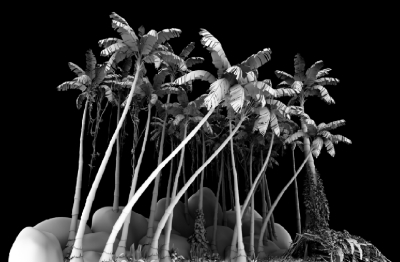

The input to the method is a point cloud (surfel) representation of the directly illuminated geometry in the scene. The surfels in the point cloud are clustered together in an octree, and the power from each cluster is approximated using spherical harmonics. To compute the indirect illumination at a receiving point, we add the light from all surfels using three degrees of accuracy: ray tracing, single-disk appoximation, and clustering. Huge point clouds are handled by reading the octree nodes and surfels on demand and caching them. Variations of the method efficiently compute area light illumination and soft shadows, final gathering for photon mapping, HDRI environment map illumination, multiple diffuse reflection bounces, ambient occlusion, and glossy reflection.
The method has been used in production of more than a dozen feature
films, for example for rendering Davy Jones and his crew in two of
the ``Pirates of the Caribbean'' movies.
Paper (PDF)
Additional materials: [SlidesFromAnnecy09.pdf]
Available as Pixar Technical Memo #08-01